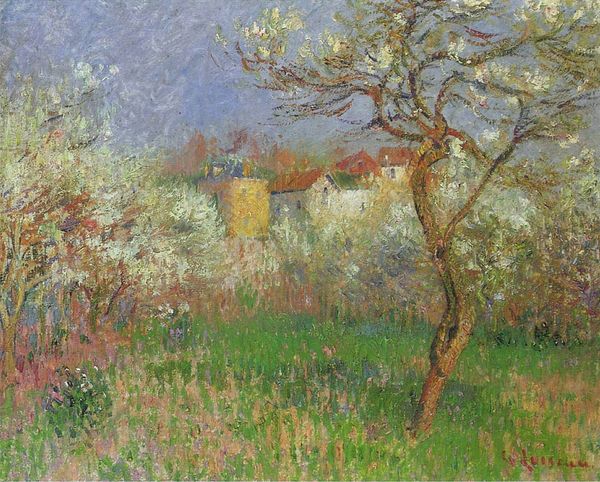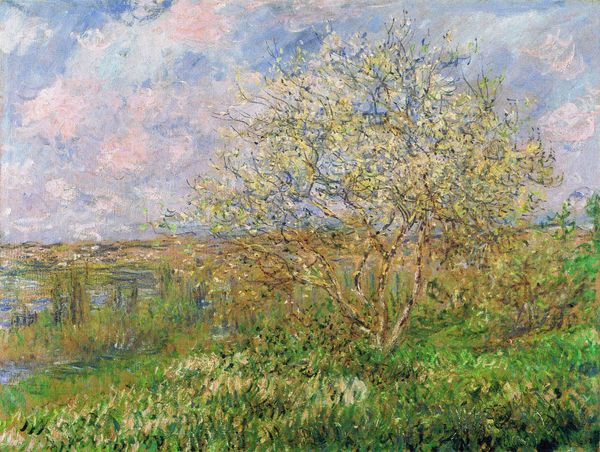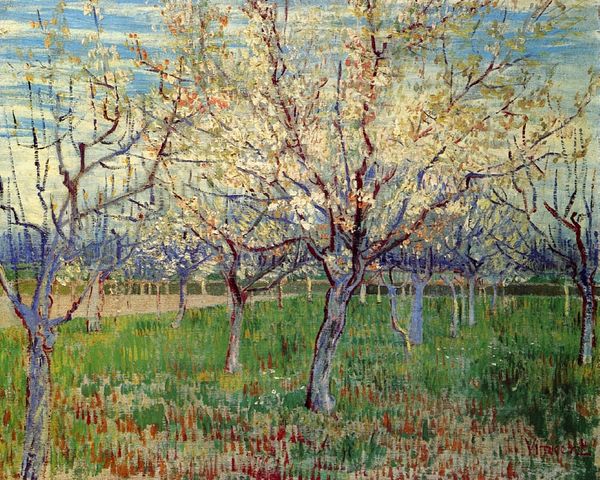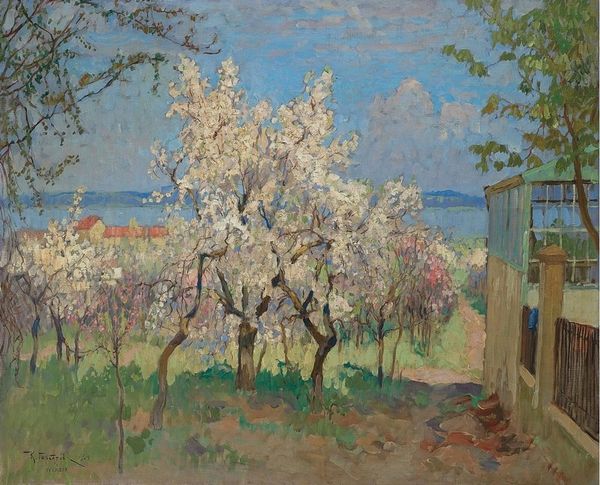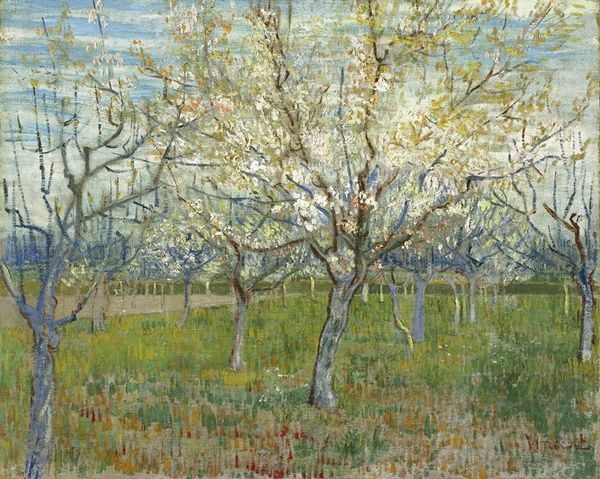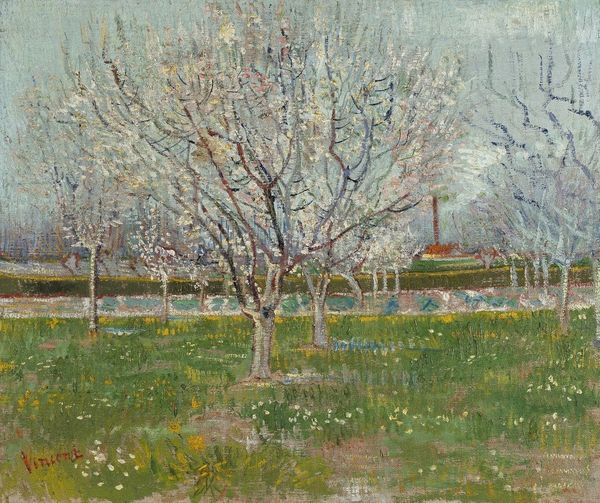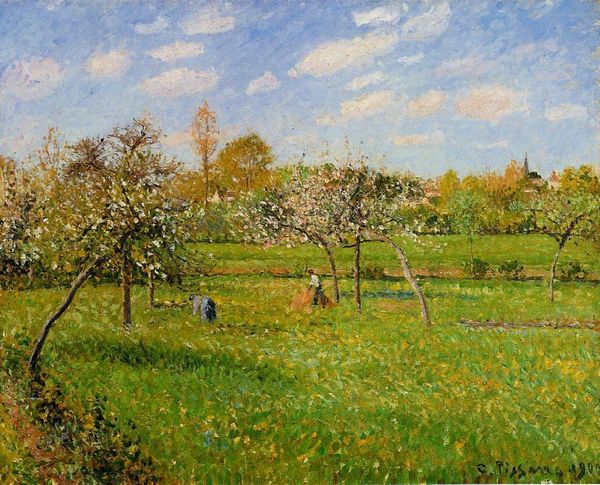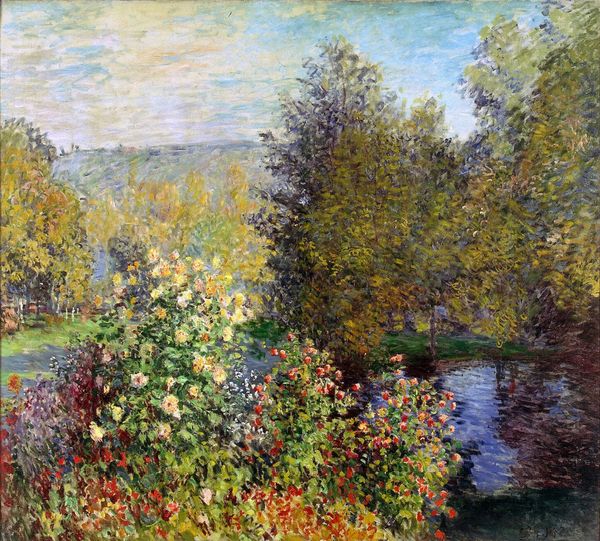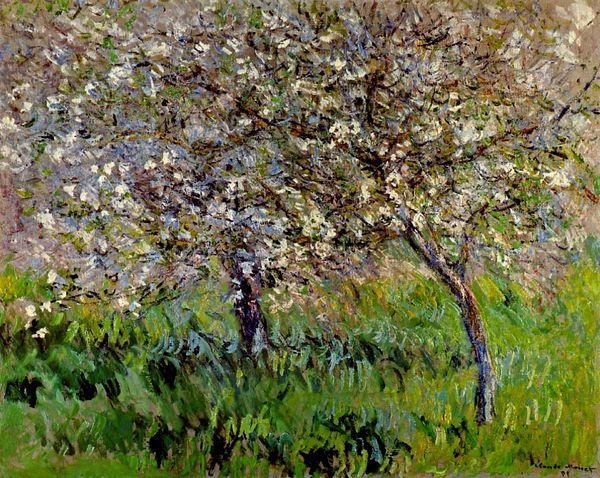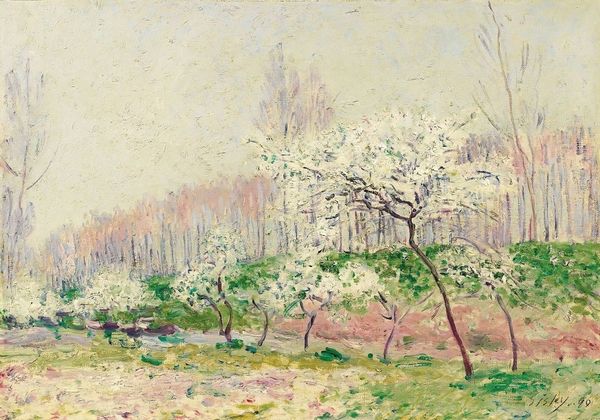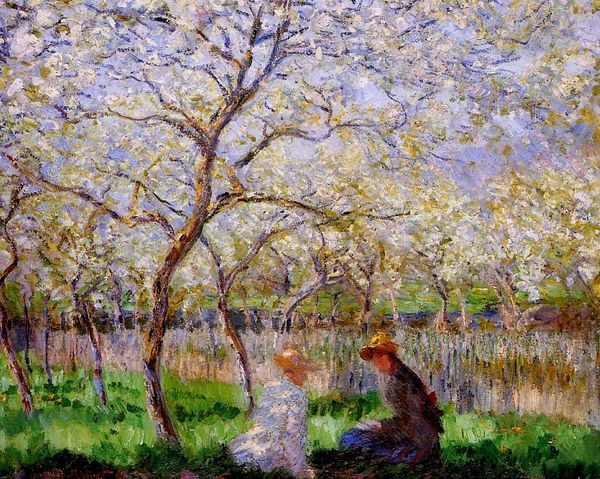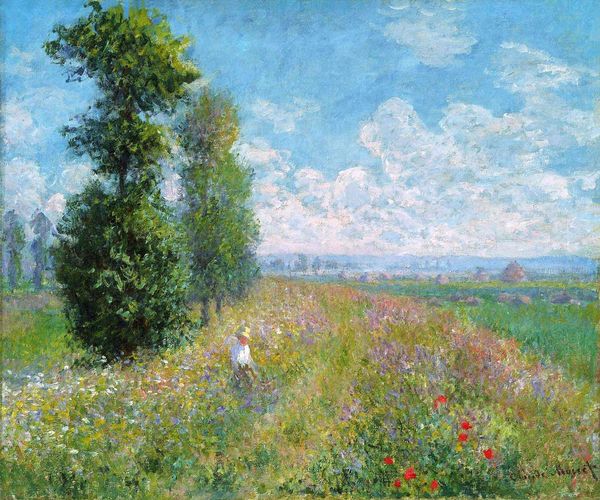
painting, plein-air, oil-paint
#
impressionist
#
painting
#
impressionism
#
plein-air
#
oil-paint
#
landscape
#
geometric
#
orientalism
Copyright: Public domain
Curator: This is Claude Monet’s *Plums Blossom*, painted in 1879. He used oil on canvas. Editor: It’s beautiful. There's such a vibrancy in what seems to be a very simple scene. The way the light filters through the blossoms is quite enchanting. What can you tell me about this piece? Curator: Consider the sheer volume of labor involved in a piece like this. Think about the preparation of the oil paints, the crafting of the canvas itself, the transportation of materials to paint en plein air. What does this repetitive application of pigment suggest about Monet’s own relationship with industrialization and emerging consumer culture? Was he implicitly resisting these shifts by celebrating handmade objects? Editor: So you're saying that the painting itself becomes a commentary on production and consumption? How so? Curator: Look at how the impasto creates a tangible surface, emphasizing the materiality of the paint itself. Does that physicality invite us to consider not only *what* is depicted, but *how* it was made, the human effort inherent in its creation? Editor: I see what you mean! The thick paint almost rebels against the smooth, mass-produced surfaces that were becoming increasingly common at that time. Did Monet choose the blossoms and landscape consciously as an act of valuing a natural, pre-industrial world? Curator: Exactly. Monet wasn't simply representing a scene; he was engaging in a dialogue about value, labor, and the changing social landscape of late 19th century France. Think also about who would have been able to afford such art. What values were *they* buying into? Editor: It’s incredible how focusing on materials and labor gives this painting a completely different dimension. Thanks for pointing out a new way to think about Impressionism. Curator: Indeed, by focusing on these points we avoid romanticising paintings like this. The production of art reflects so much wider social trends.
Comments
No comments
Be the first to comment and join the conversation on the ultimate creative platform.
